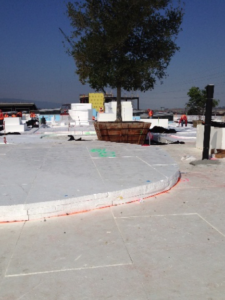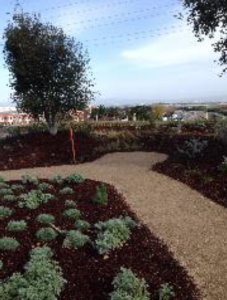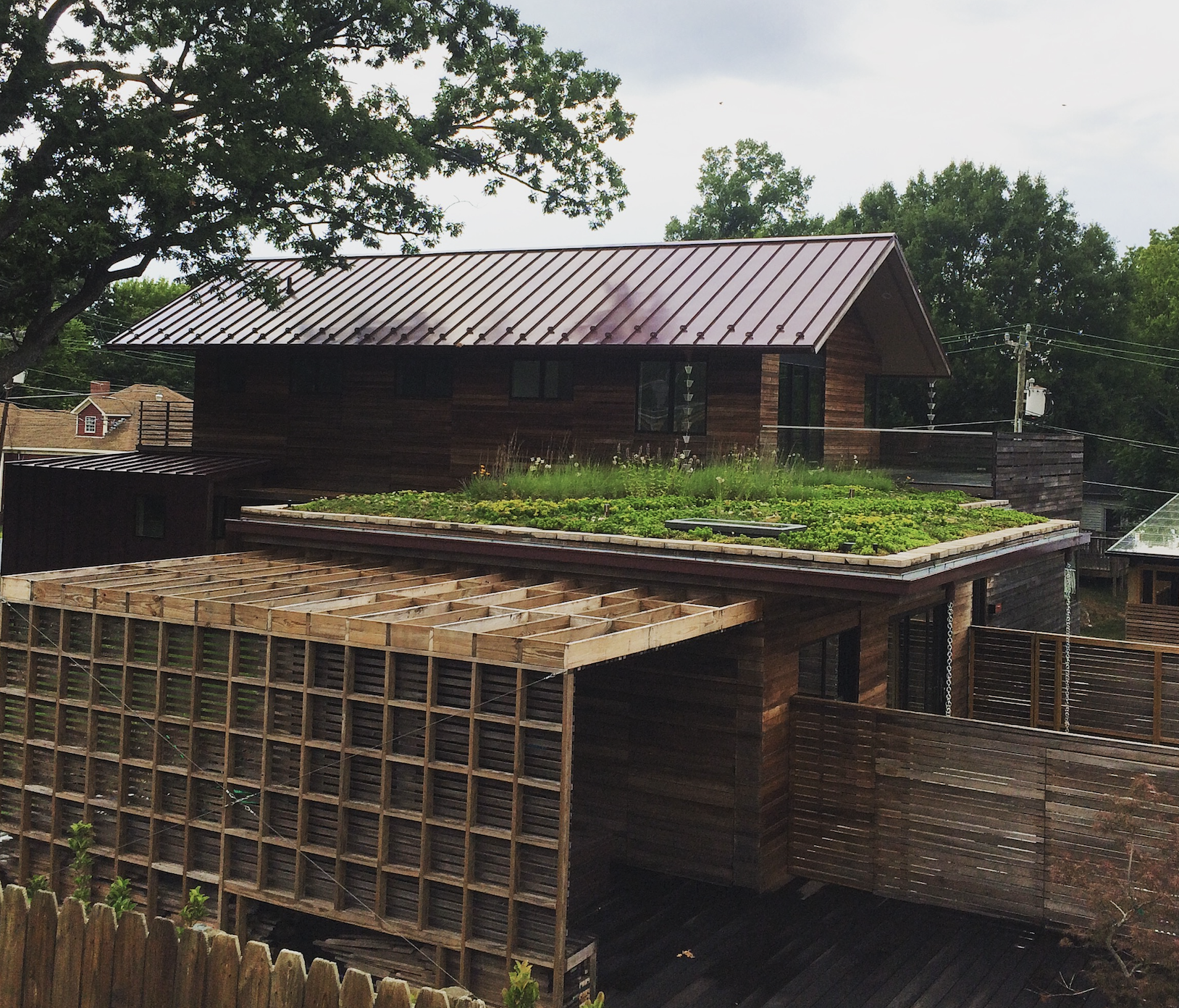For most of the past century, the rooftops of commercial and institutional buildings have largely been places to locate unsightly mechanical systems. Architectural treatments, such as parapets and screens, provide visual relief from such equipment. Now, roofing professionals and building owners increasingly look at the roof as “found space”—a place to be planted and used, instead of hidden.

Facebook’s Frank Gehry-designed MPK 20 building sports a 9-acre green roof using EPS geofoam from Insulfoam.
Throughout the U.S., garden roofs (or living roofs) are growing in popularity with more than 5.5 million square feet installed in 2014, according to Green Roofs for Healthy Cities. Most of that total was for private rather than public projects, indicating this is not just a government trend. In addition to providing attractive and usable open space, garden roofs offer environmental benefits, such as helping to slow and filter urban run-off.
Some of America’s largest companies have installed green roofs. Ford’s Dearborn, Mich., truck plant final assembly building sports one of the world’s largest living roofs at 454,000 square feet. In 2015, Facebook opened its MPK 20 office building in Menlo Park, Calif., with a 9-acre living roof featuring a 1/2-mile walking trail and more than 400 trees.
If you haven’t worked on a garden roof yet, it is likely only a matter of time until you do.
Addressing the Challenges of Garden Roofs

Weighing a fraction of soil, EPS geofoam fill creates ultra-lightweight landscaped features on Facebook’s garden roof.
Adding plants and park-like amenities to a roof increases the complexity of the roofing assembly. Garden roofs present two primary challenges for roofing professionals to solve: minimizing the dead load and preventing moisture intrusion.
The project team for the Facebook MPK 20 building’s green roof met this two-fold need—and more—with expanded polystyrene (EPS) geofoam.
Weighing considerably less than soil, EPS geofoam is an ultra-lightweight engineered fill that can be used to create contoured landscape features, such as hills and valleys. The material weighs from 0.7 to 2.85 pounds per cubic foot, depending on the product type specified, compared to 110 to 120 pounds per cubic foot for soil.
Despite its low weight, EPS geofoam is designed for strength and has better load bearing capacity than most foundation soils. Geofoam’s compressive resistance ranges from approximately 2.2 psi to 18.6 psi (317 to 2,678 pounds per square foot) at a 1 percent deformation, depending on the product.

The garden roof on Facebook’s MPK 20 building provides ample open space and a 1/2-mile walking trail for employees.
In addition to enabling lightweight, durable landscape features and helping to defend against water, EPS geofoam provides thermal insulation in garden roofs. Roofing professionals have used EPS insulation in roof assemblies for decades because it offers the highest R-value per dollar among rigid foam insulations.
Expect More Demand
Although green roofs currently account for a small portion of the billions of square feet of roofs in the U.S., expect to see more demand for them given their aesthetic and environmental benefits. High-performance materials, like EPS geofoam, can help provide a long-lasting, durable green roof assembly.
PHOTOS: Insulfoam




Be the first to comment on "Using Engineered Geofoam for Garden Roofs"